If all the jazz musicians are playing and there’s no one to hear them, then does jazz make a sound?
-Phil Schaap
As is so often the case on my journey down that Big River called Jazz, I heard great musicians long before I knew who they were. For example, when it came out in 1973 I remember hearing Hall & Oates's She’s Gone a million times on our old car’s radio or my transistor radio:
The saxophone solo is by Multi-instrumentalist Joe Farrell.
Then again, I must have listened to When I Look into Your Eyes from Santana’s 1973 album Welcome a thousand times in the mid-1970s on my brother’s record player:
Yeah, the flute solo is by Joe Farrell.
At least in that case, I did see Joe Farrell’s name in print for the first time, written in tiny and difficult-to-read script font: Flute Solo - Joe Farrell***. I noticed the three stars after his name and thought, “Yes! That is a three-star flute solo - never heard of him.” He only plays on that one song - a hired gun.
I think he may be the single jazz musician heard the most by everyone and known by almost no one. This is kind of strange, given that in jazz the opposite is usually the case - to be known by everyone and heard by almost no one, which I think can even be said of Miles Davis.
In Stopsmiling magazine issue No. 34 from 2008, Phil Schaap wrote:
“Jazz isn’t dead, it just smells funny” is how the late Frank Zappa assessed a decaying jazz scene. Today it’s worse. I don’t worry about people thinking that jazz stinks, I’m terrified that hardly anybody ever gets a whiff of it anymore.
Our schoolchildren haven’t heard any of them. John Coltrane gets his 15 minutes of class time during Black History Month. Come March, most students couldn’t tell the “Blue Trane” poster from one depicting Thurgood Marshall. Was any jazz leaned? Was any jazz heard?
From Sonny Rollins playing with the Stones and Wayne Shorter playing with Joni Mitchell to Joe Farrell playing with Hall & Oates, great jazz musicians were heard on pop radio, we just didn’t know we were listening to them. But Schaap’s point is well made. The good news is that 16 years after he made this comment, I think jazz is in a better place, but it’s still a long, long way from home.
This week on that Big River called Jazz we’ll dig in our paddles and explore the 1970 to 1973 world of one of those often-heard yet little-known jazz greats, Joe Farrell.
Joseph Carl Firrantello was born in Chicago Heights, Illinois on December 16, 1937. After graduating from the University of Illinois at Urbana–Champaign in 1959, he moved to New York City to work as a freelance musician and subsequently played with jazz greats Maynard Ferguson, Thad Jones/Mel Lewis, and Charles Mingus, to name a few.
In 1970, he recorded his debut album Joe Farrell Quartet on CTI, a quartet date with Chick Corea on keyboards, Dave Holland on bass, and Jack DeJohnette on drums:
This is an amazing album that stands the test of time. For example, Song of the Wind is an incredible duet with Chick Corea that sounds as if it could have been recorded this year:
John McLaughlin’s composition Follow Your Heart is the first track on the album. The song later appeared on McLaughlin’s 1971 My Goal’s Beyond released by the terrific Douglas label:
Here’s Mclaughlin’s fantastic version of Follow Your Heart from My Goal’s Beyond:
My Goal’s Beyond also featured the great Charlie Haden on bass. You can read more about Haden here:
Joe Farrell played on Chick Corea’s 1968 debut album Tones For Joan’s Bones and Corea returned the favor in 1970 on Farrell’s debut quartet album. So it’s no surprise that when Corea formed Return to Forever he asked Farrell to join him.
Along with Weather Report, The Headhunters, and Mahavishnu Orchestra, Return to Forever was one of the core groups of the jazz-fusion movement of the 1970s. Here’s the classic Crystal Silence from Return to Forever, their 1972 debut album released by ECM:
The great Stanley Clarke plays bass on this album. We’ll meet up with him a little further down the river…
Joe Farrell also appears on my favorite Aretha Franklin album Hey Now Hey (The Other Side Of The Sky), released in 1973 on the Atlantic label. This is an excellent album that along with Joe Farrell features another great jazz saxophonist Phil Woods. Farrell plays a stunning tenor solo on Angel, written by Aretha’s sister Carolyn Franklin or “Candy Carroll”. Carolyn was a fine musician in her own right, who recorded several records for RCA Victor beginning in 1969 with her debut Baby Dynamite!.
On Angel, Carolyn and Aretha’s oldest sister Erma Franklin provide background vocals:
Incidentally, in 1967 Erma Franklin recorded the original Piece of My Heart, more popularly known by Janis Joplin:
This is an absolute killer video of Erma Franklin lip-synching her 1967 classic Pieces of My Heart, filmed on location at the Soup Kitchen in Detroit, Michigan on Sunday, October 25th, 1992:
Erma Franklin’s original remains my favorite version of the song, even better than Dusty Springfield’s and you know how much I like Dusty…
From Hey Now Hey (The Other Side Of The Sky), Joe Farrell also has a nice flute solo on Mr. Spain:
This is a chilling song about the struggles of opiate addiction, but it also applies to anyone’s struggle - a stunning underground classic.
To circle back to where it all started for me with Joe Farrell, there is one more Hall & Oates song I like from their Abandoned Luncheonette album, the first track When the Morning Comes:
I remember hearing this song on our old car radio’s lo-fi speakers. I thought Farrell’s solo was a harmonica. Years later when I heard it more clearly I thought it was a synthesizer. It was only a few years ago I read that it was actually an oboe. Such was the mythical career of Joe Farrell.
Here’s one more for the road. As was often the case in the 1970s, back when jazz “smelled funny”, so much great music by so many great musicians was lost in the wind. Joe Farrell’s Skate Board Park released in 1979 by the Xanadu Records is one such example. Catch the wind, listen to Skate Board Park, and remember Joe Farrell:
In some odd way, the horn and piano interplay on this song reminds me of a fascinating duet between Anthony Braxton and Dred Scott on Lennie Tristano’s composition Dreams from Braxton’s Eight (+3) Tristano Compositions 1989 - For Warne Marsh:
Joe Farrell died tragically on January 10, 1986, in Duarte, California from Myelodysplastic syndrome (MDS). He was only 48 years old. We miss you Joe, but your name and music live on and are waiting to be not only heard but known by everyone.
Next week, on that Big River called Jazz, we’ll dig our paddles in and explore the world of The Endless Summer.
Please hit this link to buy me a cup of coffee, if you’d like to show your guide some appreciation for this and past journeys. Know in advance that I thank you for your kindness and support.
If you like what you’ve been reading and hearing so far on our journey and would like to share this with someone you think might be interested in learning more about our great American art form: Jazz, just hit the “Share” button.
From Astaire to Sun Ra: A Jazz Journey is a reader-supported publication. If you feel inclined, subscribe to my journey by hitting the “Subscribe now” button.
Feel free to contact me at any time to talk shop. I welcome and encourage that.
Until then, keep on walking….


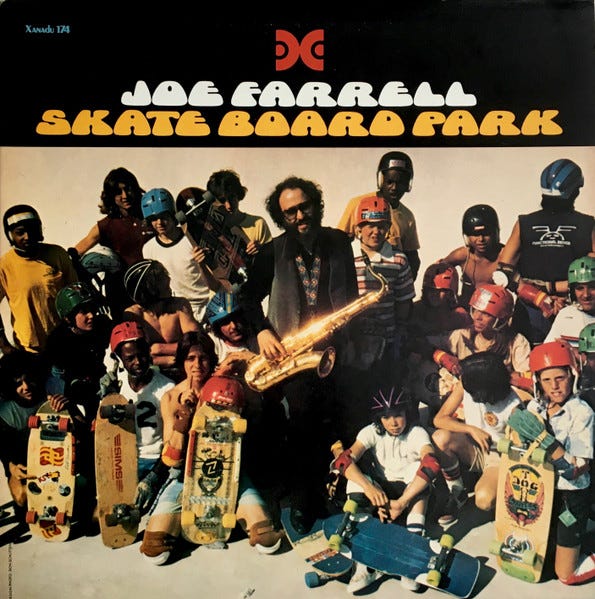
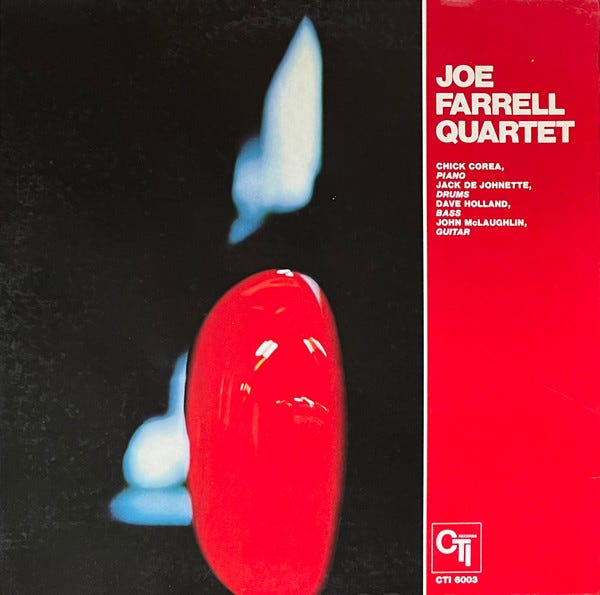
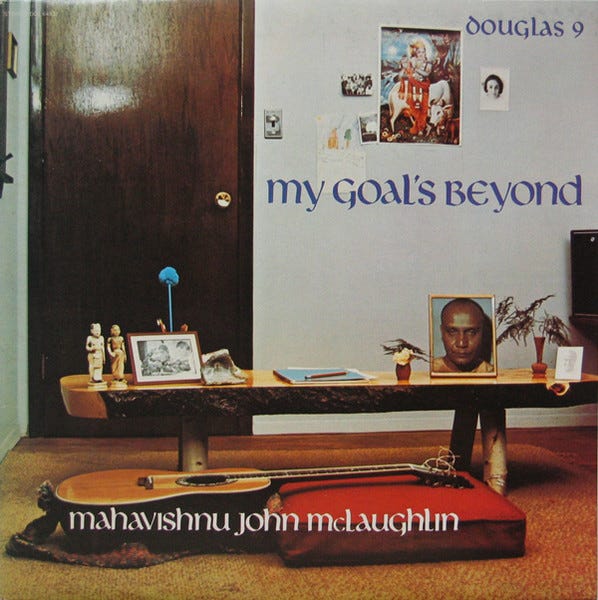
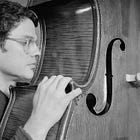
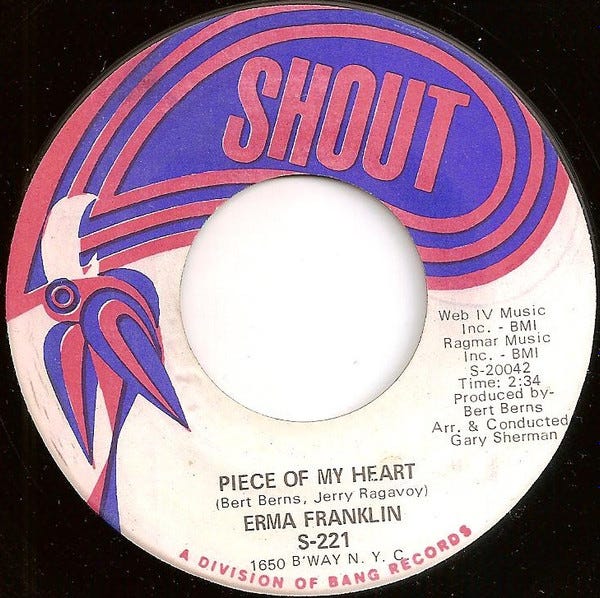
Great piece on Joe Farrell - a great player. He also played, among other guest appearances, the flute solo on Laura Nyro's 'Poverty Train.'
When I was in high school, I stumbled on Farrell's 1975 LP 'Canned Funk' and had to buy the album on the strength of its weirdo cover. Since then I have picked up his first six solo LPs and absolutely dig them all. Thanks for highlighting this often overlooked Jazz man.